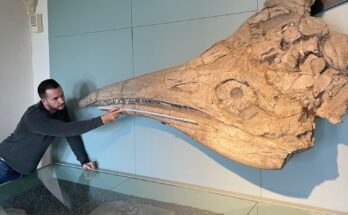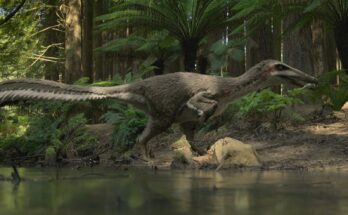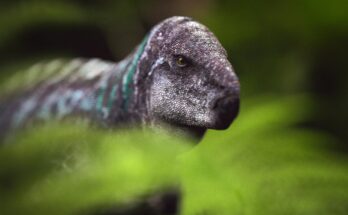🔥 PART 1: Introduction — The Demon That Walked the Earth
In the heart of what is now South America, during the Late Cretaceous period around 70 million years ago, a strange and deadly predator ruled the prehistoric plains. It wasn’t the size of a Tyrannosaurus rex, but it was faster, fiercer, and unlike anything else that had come before. With a muscular body, long legs built for speed, and two sharp, bull-like horns rising from its skull, this monster looked like it came straight out of a nightmare.
Its name? Carnotaurus, which means “Meat-Eating Bull.”
Carnotaurus is one of the most bizarre and fascinating dinosaurs ever discovered. Its look alone is unforgettable — a predator with a devilish face, tiny, almost useless arms, and a body built for speed and power. It may not be as famous as T. rex or Velociraptor, but it has quickly become a fan-favorite in dinosaur films and documentaries thanks to its terrifying design and mysterious history.
This creature wasn’t just another carnivorous dinosaur. It was a specialist, an apex predator adapted to hunt in a unique ecosystem filled with strange animals. Unlike other predators, Carnotaurus had a unique mix of features: horned head, unusually tiny arms, strong legs, and forward-facing eyes. It’s one of those rare dinosaurs that looked like it was designed by a movie director — and in fact, Hollywood couldn’t resist using it. Carnotaurus appears in several dinosaur-themed movies, video games, and books.
But behind the fame is a real animal that lived and thrived in a very different world. In this article, we’ll explore the full history of Carnotaurus — from its discovery in Argentina to its portrayal in Jurassic World. We’ll look at how it hunted, what made it so special, and why scientists still debate its behavior and biology. Whether you’re a dinosaur lover, a curious learner, or just looking for great content for your website — this is the ultimate guide to the one and only Carnotaurus.
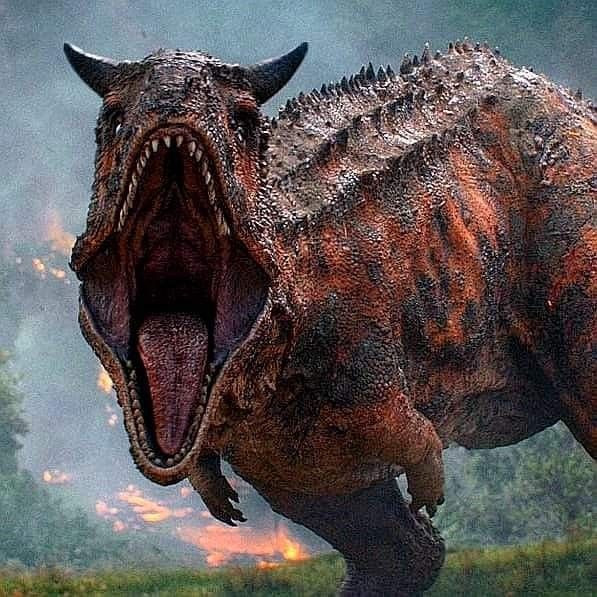
Let’s go back 70 million years and meet one of the fastest, weirdest, and deadliest predators of the Late Cretaceous. This is Carnotaurus: The Horned Demon of the Dinosaur World.
🦴 PART 2: The Discovery of Carnotaurus – How the Horned Hunter Was Found
The story of Carnotaurus began not 70 million years ago, but in the year 1984, when a team of Argentine paleontologists led by the famous dinosaur hunter José Bonaparte uncovered something incredible in Patagonia, Argentina. They were exploring a region known for Late Cretaceous fossils when they stumbled upon a nearly complete skeleton of a dinosaur no one had ever seen before. It had a strange skull with two horns above its eyes, tiny arms, and long, powerful legs.
Bonaparte quickly realized they had discovered a new species — and not just any dinosaur, but something truly unique. He named it Carnotaurus sastrei, which means “Meat-Eating Bull” in Latin. The species name “sastrei” honored Angel Sastre, the owner of the land where the fossil was found.
This discovery was one of the most important in South American paleontology. Most dinosaur fossils from North America and Asia belonged to well-known groups like tyrannosaurs and raptors. But Carnotaurus belonged to a different group entirely: the abelisaurids, a family of carnivorous dinosaurs that dominated the southern continents during the Cretaceous period.
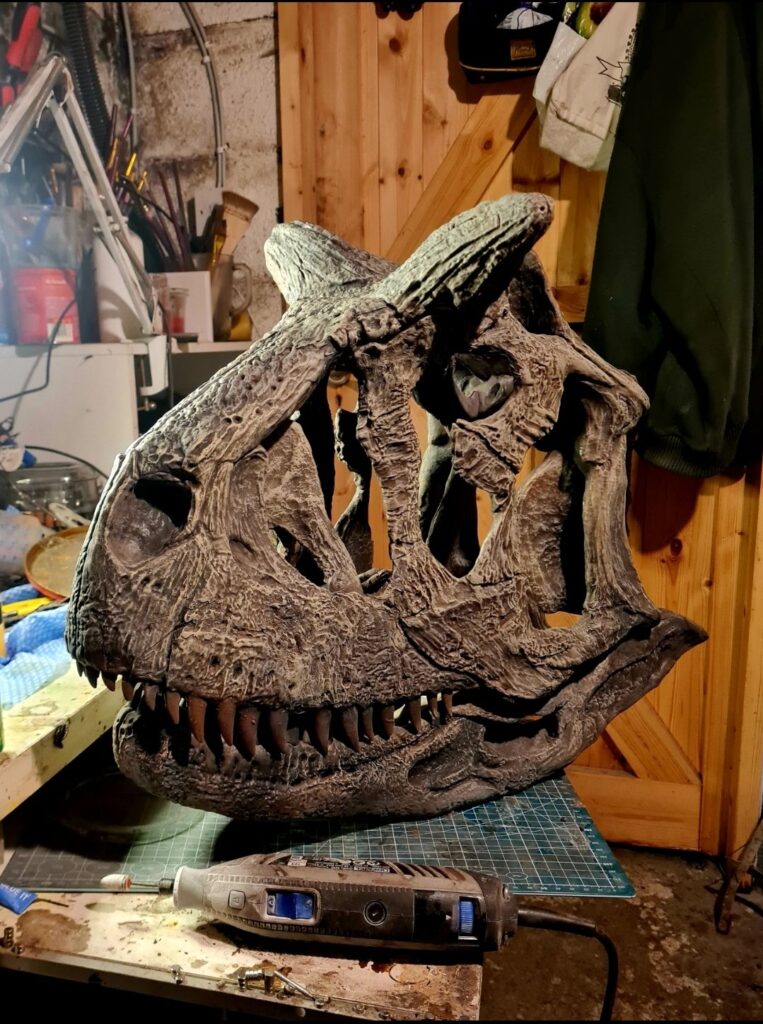
🌍 What Made This Discovery So Special?
- It Was Almost Completely Intact:
Most dinosaur fossils are found in pieces — a leg here, a jaw there — but the Carnotaurus fossil was 90% complete, including the skull, spine, ribs, hips, and legs. Even skin impressions were preserved on some parts of the body, which is extremely rare. - The Skull Had Horns:
Carnotaurus had two thick horns above its eyes, making it look like a predator straight from mythology. No other carnivorous dinosaur had such prominent horns. These weren’t just for decoration — they may have been used for fighting or intimidation. - Its Arms Were Tiny — Even Smaller Than T. rex’s!
Believe it or not, Carnotaurus had shorter and stiffer arms than T. rex. They were so small that scientists don’t believe it used them at all in hunting. Instead, Carnotaurus relied on its speed, jaws, and horns. - It Had Skin Impressions:
This dinosaur left behind detailed impressions of its scaly skin. Its skin was covered in rough, pebbly scales and rows of large bumps — giving it a rugged, armored appearance. This helps scientists understand what dinosaurs actually looked like, not just their bones.
🧬 The Rise of the Abelisaurids
Before Carnotaurus, the abelisaurid family was not very well understood. These were the top predators in South America, Madagascar, and India during the Late Cretaceous. They were very different from the T. rex family — shorter snouts, smaller arms, and often decorated skulls.
Carnotaurus became the most famous abelisaurid thanks to its bizarre appearance and the quality of its fossil. It helped paleontologists understand how predator dinosaurs in the Southern Hemisphere evolved differently from their Northern Hemisphere cousins.
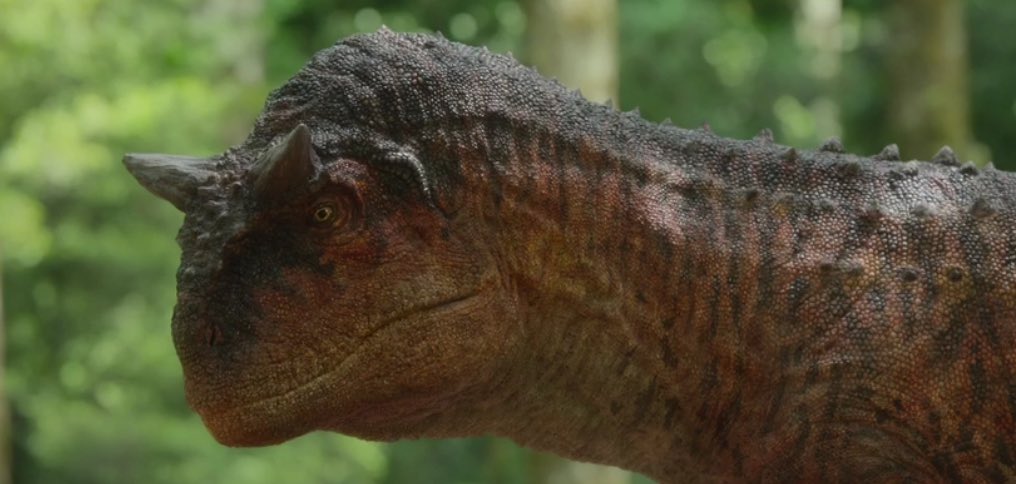
🎬 Carnotaurus in Pop Culture
After its discovery, Carnotaurus became a star. It was featured in books, documentaries, and especially movies. Its demonic horns and fierce appearance made it perfect for cinema.
- In Disney’s “Dinosaur” (2000), the Carnotaurus was the main antagonist, hunting the herd of peaceful herbivores.
- It appeared in Jurassic World: Fallen Kingdom (2018), where it dramatically fought a Sinoceratops and later attacked humans in a fiery scene.
- It’s featured in video games like ARK: Survival Evolved, Jurassic World Evolution, and The Isle, gaining a massive fan following.
But even with its fame, there is still much mystery surrounding this dinosaur. How did it hunt? Did it live alone or in packs? What role did its horns play in battle?
We’ll explore all of that in the next sections.
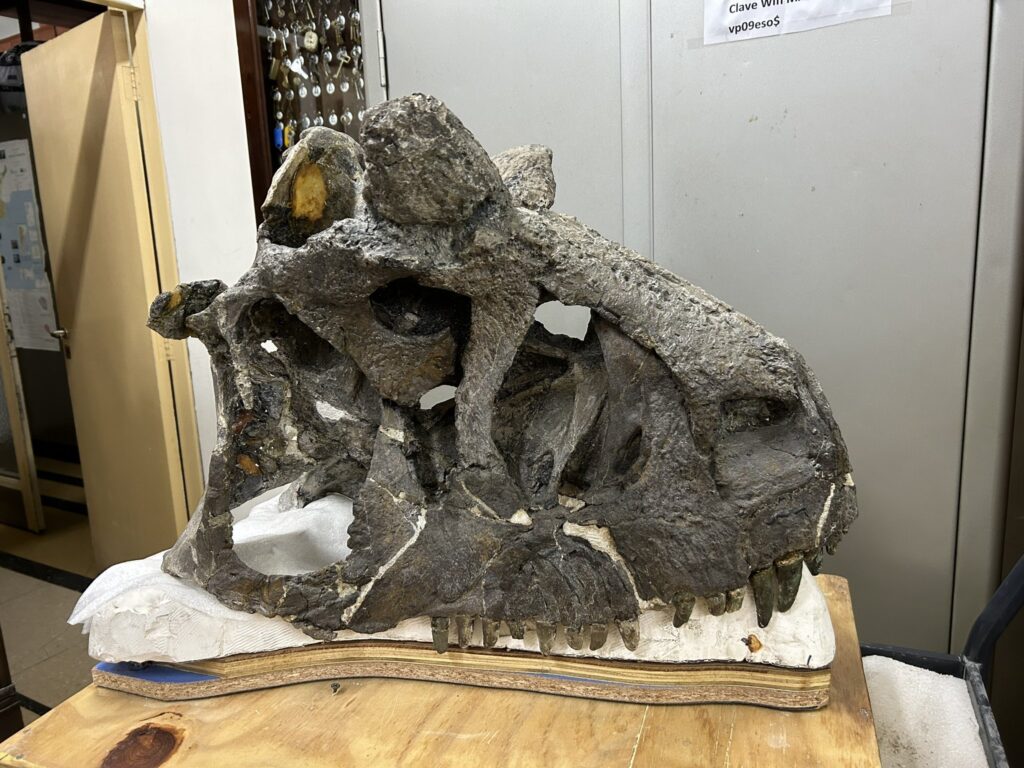
🧠 PART 3: Anatomy and Physical Features — Built for Speed and Battle
Carnotaurus wasn’t just strange—it was one of the most uniquely built predators in all of dinosaur history. Every part of its body tells a story about how it lived, hunted, and survived in the wild, dangerous ecosystems of prehistoric South America. Let’s break down what made Carnotaurus a truly special predator.
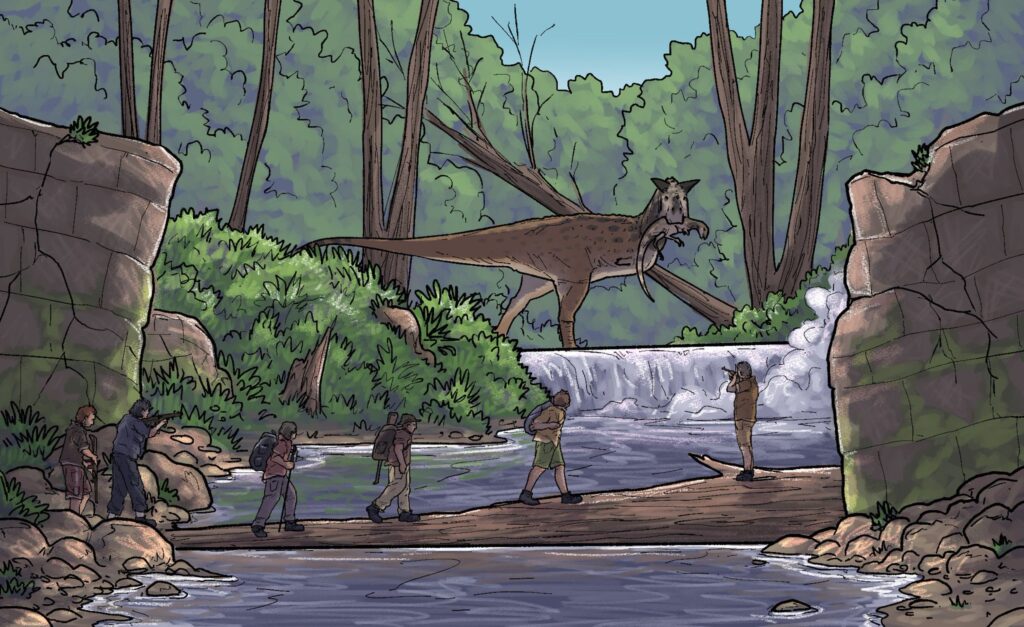
🦴 1. The Skull: Devilish Design
The most striking feature of Carnotaurus is its skull. It was short, deep, and muscular, unlike the long, narrow skulls of most other meat-eating dinosaurs. Two thick, curved horns rose above its eyes like the horns of a bull, giving the dinosaur a fearsome, almost demonic look.
But these weren’t just for show. The structure of the skull suggests that the horns were strong and supported by bone. Paleontologists believe they could’ve been used for:
- Headbutting rivals during fights
- Display to scare other dinosaurs or attract mates
- Protection during face-to-face clashes
The skull also had forward-facing eyes, giving Carnotaurus something rare in dinosaurs — binocular vision. This means it could judge distances more accurately, which helped it become a better hunter.
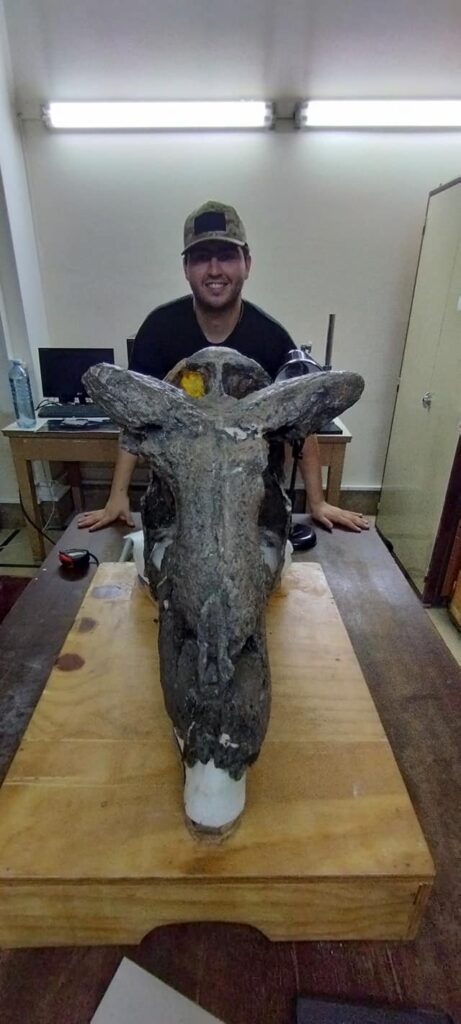
🦷 2. Jaws and Teeth: Precision Over Power
Carnotaurus had a narrow jawline filled with sharp, blade-like teeth. Unlike T. rex, which had bone-crushing jaws, Carnotaurus had a quick, snapping bite designed to slash through flesh. Its jaws could open wide and deliver fast, repeated bites, allowing it to attack quickly and retreat before the prey could fight back.
Interestingly, studies show that Carnotaurus may have had a weak bite force, but it made up for it with speed and precision. It may have targeted soft spots like the neck or belly, rather than going for a bone-crushing attack.
💪 3. Arms: The Most Useless Limbs in Dinosaur History?
One of the strangest things about Carnotaurus is its tiny arms. We often joke about T. rex having short arms — but Carnotaurus takes it to the next level.
Its arms were so small that:
- They couldn’t reach its own mouth
- They had no claws
- The elbows were fused, meaning they didn’t bend
In fact, scientists believe Carnotaurus arms had no useful function at all. It didn’t use them to hunt, climb, or fight. This tells us something important: Carnotaurus didn’t need arms. Its success came from its legs, jaws, and horns.
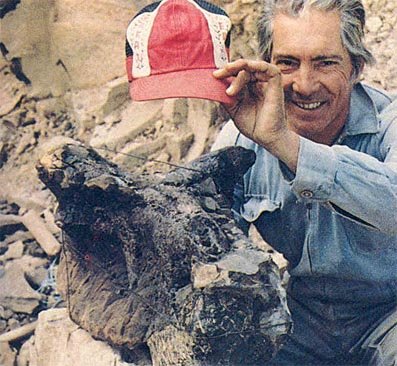
🏃♂️ 4. Legs and Tail: Built for Speed
What Carnotaurus lacked in arm strength, it made up for in speed. Its legs were long, slim, and muscular, built for sprinting across open landscapes.
Paleontologists estimate Carnotaurus could run up to 30–35 km/h (19–22 mph) — very fast for a dinosaur of its size. This would’ve made it a deadly ambush predator, capable of burst attacks on slower-moving prey like sauropods or hadrosaurs.
Its tail played a big role in this. Carnotaurus had a special feature: the muscles on its tail were extremely well-developed and rigid, acting like a spring-loaded power booster. This design helped balance the body and generate powerful forward thrust during a chase.
🦖 5. Skin and Appearance: Scaly, Spiky, and Armored
Thanks to preserved skin impressions from its fossil, we know more about Carnotaurus’s appearance than most other theropods.
Here’s what its skin looked like:
- Covered in small, non-overlapping scales
- Rows of larger bumps or osteoderms along the back and sides
- No evidence of feathers
These raised bumps likely gave Carnotaurus a rugged, armored look, like a crocodile. While these wouldn’t stop a strong bite, they may have helped during fights with rivals or when hunting prey that could fight back.
🔍 Summary: What Made Carnotaurus So Special?
| Feature | Description |
|---|---|
| Horned Skull | Used for display or combat |
| Forward-Facing Eyes | Allowed depth perception |
| Fast Legs & Rigid Tail | Built for high-speed chases |
| Tiny Arms | Virtually useless — a mystery to scientists |
| Armored Skin | Tough, spiky texture helped protect it |
Carnotaurus wasn’t just another predator — it was a strange but deadly design by nature. Everything about it suggests that it was a speed-based ambush hunter, relying on bursts of movement, sharp jaws, and deadly accuracy. Its body evolved not for brute force, but for a deadly combination of speed, surprise, and style.
